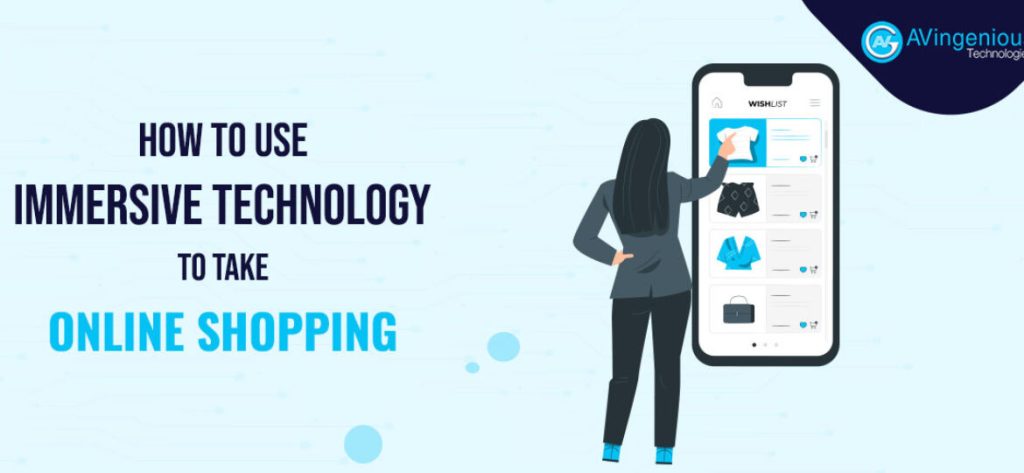
what is website revamping
Immersive technologies are fundamentally altering global internet retail. A sizable portion of customers supported immersive technology experiences, as per latest research. It follows that customers in the present day are prepared to adopt immersive technologies into their daily lives.
While making a purchase, customers want to feel a connection with the goods, and immersive technology seems to be the ideal method for doing this. To prepare for the rising need for immersive experiences, online companies should rethink e-commerce.
The groundwork has been done for widespread use of immersive technologies. Augmented reality (AR) is now a workable, reliable, and inexpensive solution for the mainstream market thanks to improvements in hardware, software, tools, and distribution methods. Immersive technologies have now become more widely used, and people’s desire to use them in daily life has also increased.
Leading e-commerce firms are adapting to take advantage of these developments and are able to increase engagement, dwell periods, memory recall, and sales performance.
A strategy to improve an engaging consumer experience using 3D technologies
Although e-commerce offers a greater variety of things than a mall, it nevertheless has its drawbacks. Flat photos do not show objects from all sides, and customers cannot inspect the products’ details, materials, as well as quality as they can in physical locations. This results in a lot of returns and worse conversion rates for online shops and marketplaces. Nevertheless, with the development of 3D technology, it is now possible to combine online and offline shopping.
Retailers may now present customers with local, interactive, as well as realistic 3D product representations on their websites thanks to 3D technology. As a result, customers may examine products from any angle of vision, zoom in to notice all the little details, and ultimately make an informed purchasing decision.
Brands who already incorporate interactive 3D material into their websites perceive an improvement in user experience and consumer engagement. Research shows that adding interactive 3D information to an online business enhances customer perception of the goods by 23% and makes them 29% more thoughtful about deciding to buy. The client experience improves by 33% as a result.
As a result, yes, these facts show that in order to compete in the market, you must always be one step ahead of your competitors and amaze your users before they are courted by opponents.
Offering a "try-before-you-buy" experience through virtual try-on
Technology has advanced to the point that we can now do more than just place objects in 3D environments. Customers can now experience products “try-before-you-buy” from the convenience of their home. Online shoppers can virtually try on things to assess how they will suit them before making a purchase. Businesses, where customers are longing for a feeling of “touch and feel,” can benefit from this technology.
Jewelry shoppers can benefit from virtual try-ons as well. Jewelry, watches, and accessories are the third most frequently returned goods category. Customers list incorrect sizing, poor fit, and a mismatch between the item and their expectations as the top causes for returns. This issue is resolved through virtual try-on, which enables customers to visualize how the things will fit them in reality and reduces returns. In their online storefronts, some high-end watch companies are already employing the technology.
Online buying will change as a result of immersive technologies
With the help of distinctive, unforgettable, and interactive experiences, immersive technologies provide limitless potential for reaching out to clients. Immersive technologies will become more and more valuable as Gen Z and millennials gain more purchasing power. Customers will keep looking for engaging experiences, and more businesses will use immersive technologies in the coming years. This will fundamentally alter how customers research products online, try on clothing, and engage with brands.
What comes next?
Retailers must decide where to begin, what to create, and most crucially, what will actually alter the industry instead of simply serve as a marketing gimmick in light of the development of the metaverse and web3 platforms.
Retailers must take into account what will produce measurable results and a return on investment. Although the metaverse may hold the key to the future of e-commerce, immersive technology still has a lot of unrealized potential.
Perhaps there will be metaverse shopping, a stronger emphasis on digital twins, and the usage of avatars to reward loyal customers. The current state of knowledge is that end users and brands are able to have richer, more immersive experiences thanks to cameras and spatial computing. It is a trend that will continue to influence cutting-edge businesses like e-commerce as we transition from mobile devices to the headsets as well as glasses of the future during the coming ten years.



